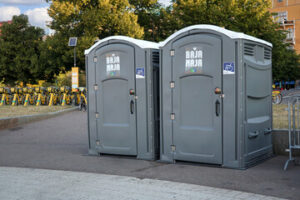Waste doesn’t just disappear once it’s out of sight. It continues to affect ecosystems and communities. That’s why rubbish removal is evolving rapidly. The goal now is efficiency with minimal impact.

Modern removal services prioritize waste stream separation. Mixed junk is sorted by material type on-site. This speeds up recycling and prevents contamination. Less goes to landfills when materials are filtered early. Visit www.paulsrubbishanddemo.com/ to learn more.
Demolition projects are shifting from brute force to precision. Controlled deconstruction is gaining favor. Crews take down structures in stages, not just all at once. This method safeguards usable materials and limits dust.
Artificial intelligence is now guiding rubbish classification. Smart sensors detect the type and toxicity of waste. This enables quicker decisions during cleanup. Safety and speed go hand in hand.
Manual labor remains critical but is now paired with machines. Robotic arms help sort, lift, and load efficiently. Workers supervise for accuracy and safety. This human-machine partnership boosts results.
Structural mapping is done before a demolition begins. Drones capture 3D images to plot load points. Engineers simulate collapse sequences in software. The goal is to bring down only what’s intended.
Some crews now use noise-dampening techniques. Special barriers and tools reduce disruption. This is crucial near schools, hospitals, or residential zones. Community-friendly demolition earns better acceptance.
Wastewater from demolition sites is filtered before release. Portable treatment units purify runoff immediately. Harmful residues don’t reach drains or soil. This protects surrounding natural and built environments.
There’s also a rise in on-site material repurposing. Crushed bricks become new driveway bases. Steel beams get cleaned for reuse. Transport costs and environmental damage decrease drastically.
Rubbish removal from disaster zones now uses mobile units. These units include crushers, compactors, and incinerators. Debris is processed where it falls. This speeds recovery efforts and limits hazards.
Demolition firms are also partnering with artists and designers. Salvaged wood and stone are turned into furniture or art. This preserves memory and reduces waste. What was once trash gains a second life.
Eco-certifications are now awarded to green demolition sites. Points are earned for dust control, recycling, and low emissions. These ratings help companies market their eco-conscious methods. Reputation and responsibility now align.
Time-sensitive demolitions are being managed with predictive software. Algorithms forecast delays due to weather or material strength. Schedules adjust in real time. This prevents costly downtime and missteps.
New gear has transformed worker safety standards. Suits detect air quality and alert users to danger. Helmets have built-in radios for real-time updates. Safety is proactive, not reactive.
Site boundaries are now equipped with smart fencing. Cameras monitor movement and alert crews. Unauthorized entry is flagged instantly. These tools prevent both accidents and theft.
Old electrical wiring is removed carefully for copper recovery. Copper prices drive its demand in global markets. Carefully stripped cables are worth thousands. Removal crews now include salvage specialists.
Invasive plants are also considered during rubbish removal. Certain species thrive in post-demo soil. Crews treat soil before and after removal. This prevents ecological imbalance.
Digital tokens are being used to track waste journeys. Each load has a scannable ID that records its path. From pickup to landfill or recycling, the data is stored. Transparency builds accountability.
Temporary ramps and rails are installed for rubbish handling. These prevent damage to surrounding structures. They also improve movement efficiency. Fewer accidents occur with smoother navigation.
Pneumatic tools are replacing traditional jackhammers. These reduce vibrations and operator fatigue. Precision improves and structural damage lessens. Less force brings better results.
Dust suppression is no longer just water spraying. Some use biodegradable foam that traps particles. This stays longer and requires less volume. Nearby areas remain cleaner throughout the project.
Demolition materials are also scanned for embedded contaminants. Hidden asbestos or lead can cause major delays. Early detection avoids fines and health issues. Specialized teams handle the extraction.
Heavy equipment now includes GPS-enabled logs. Each movement is recorded to ensure compliance. This also deters misuse or overuse of machinery. Maintenance is based on actual performance data.
Site access has also been improved using modular panels. Vehicles drive over these instead of dirt. This prevents mud spread and road damage. These panels are removed and reused elsewhere.
Climate-sensitive zones now use lighter removal methods. Instead of loud tools, quiet saws are employed. Noise and vibration are reduced to protect wildlife. This minimizes environmental shock.
Building codes have expanded to include demo-specific rules. Some areas mandate minimum reuse quotas. Others require before-and-after soil testing. Compliance now includes post-removal care.
Digital waste logs are shared with local governments. These help monitor waste types and volumes. Better data leads to smarter policies. Transparency also reduces illegal dumping.
Old flooring is now a prime target during rubbish removal. Wood, tile, and concrete get processed for resale. This reduces the need to mine or cut new materials. Circular use is no longer niche—it’s normal.
Fire-risk zones require special handling of flammable waste. Crews follow strict containment protocols. Specialized containers resist sparks and heat. This prevents flare-ups during summer work.
Communication has improved through mobile coordination apps. Site leads, drivers, and disposal units stay connected. Tasks are updated live as conditions change. Coordination boosts project speed and safety.
Some demolition techniques now preserve partial structures. Only damaged sections are removed. This reduces waste and maintains character. These selective demolitions require skilled precision.
Geothermal sensors guide rubbish removal in extreme climates. Subsurface data helps crews prepare for hazards. Frozen ground or unstable heat pockets are flagged. Work adapts instead of halting.
Asbestos removal has seen advances in containment. Double-sealed barriers trap airborne particles. Negative-pressure units keep toxins inside. Workers now use full-spectrum breathing systems.
Public education is being tied into demo and removal projects. Local residents are informed of timelines and risks. They’re taught what can be salvaged or reused. This builds cooperation and awareness.
Deconstruction robots are being piloted in high-risk zones. These machines handle unstable materials from a distance. Precision arms and sensors guide removal. Human operators remain out of harm’s way.
Emergency rubbish removal after storms is more mobile now. Compact fleets handle diverse waste loads fast. These include fallen trees, metal debris, and shattered glass. Recovery becomes quicker and safer.
Demolition dust is even analyzed in real time. Air sampling stations report pollution levels. If thresholds are breached, work halts temporarily. Health is prioritized with data, not guesswork.
Tunnels and basements are now removed with vacuum systems. These suck debris from confined areas. Workers no longer need to manually haul junk upstairs. It saves time and physical strain.
Glass and ceramics from demo sites are sorted robotically. Sensors distinguish break types for correct recycling. Machines handle sharp edges without injury. Automation reduces risk and waste.
New biodegradable rubbish bags are replacing plastic. These dissolve after use without toxins. They hold the same weight but decompose safely. This minimizes post-removal pollution.
Cross-functional crews are becoming the norm. Electricians, masons, and waste experts work side by side. This avoids repeat visits and delays. Projects end faster with more skill sets present.
Thermal imaging helps detect buried wires or heat sources. These inform removal plans for old tech setups. Fires and shorts are avoided during extraction. This tool is now essential for urban demo sites.
Demolition drones aren’t just for inspection anymore. Some drop foam or wraps for protection. Others guide line-of-sight work for remote crews. Their flight data improves future planning.
Heavy machinery now includes auto-stabilization features. These adjust to ground unevenness automatically. Work proceeds on sloped or shifting terrain safely. Crews work more confidently in tough areas.
Special permits are required for night-time rubbish operations. These focus on noise control and light pollution. Infrared tools are used to avoid disturbing neighbors. The city sleeps while the cleanup continues.
Micro-demolition is an emerging technique for heritage sites. This involves ultra-light tools and manual separation. Walls, tiles, and beams are preserved intact. History is respected through patience and care.
Today’s rubbish removal isn’t just about tidying up. It’s about transforming how we handle what’s discarded. Every advancement protects the earth and improves urban life. The future of removal is clean, smart, and deliberate.


